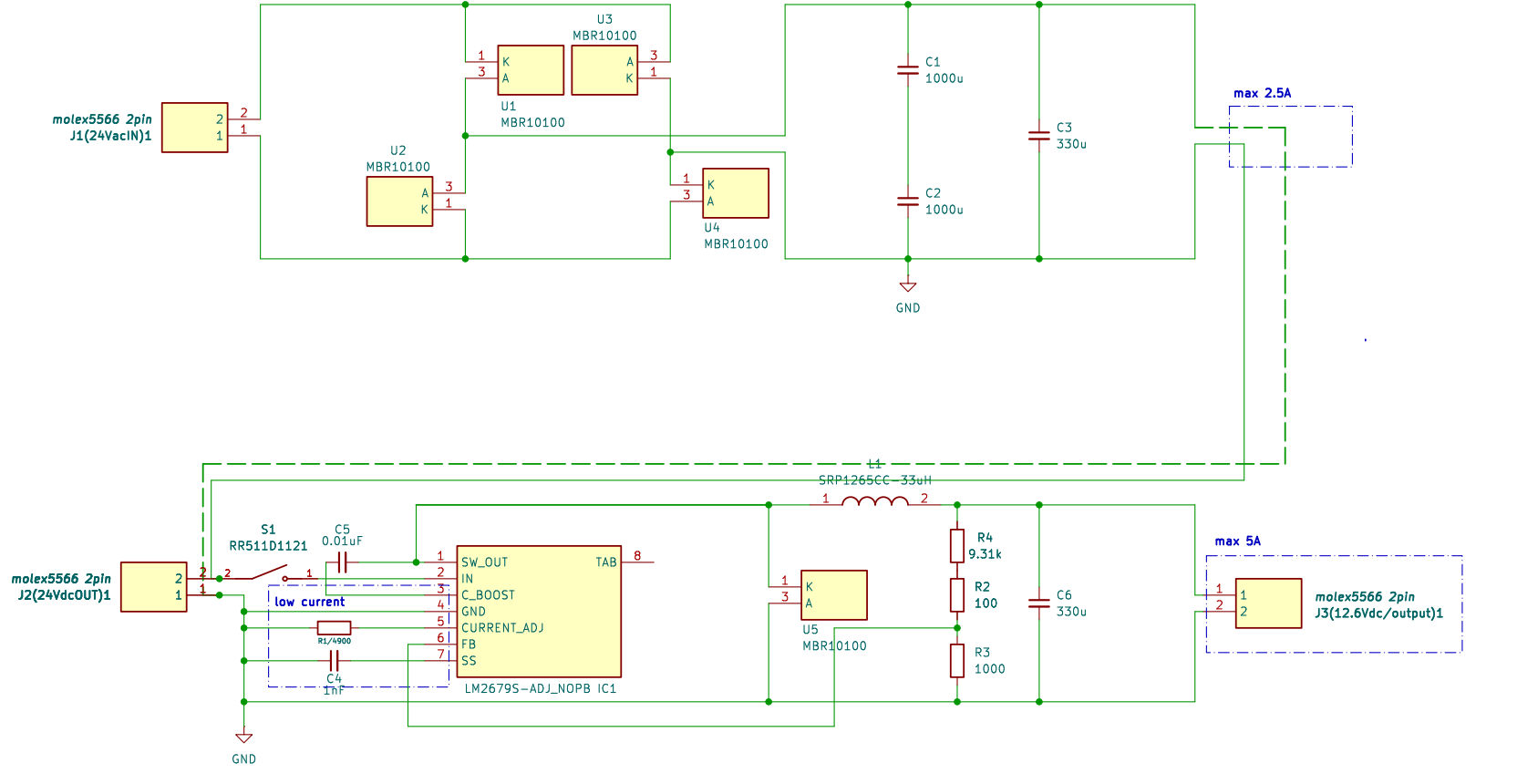Tool/software:
Hi, I am making a converter with my university graduation work.
I'm designing a buck converter that takes 24Vac voltage as input and outputs 12.6V dc voltage.
It was designed as shown in the circuit diagram in the figure, and it was confirmed that the output voltage came out normally under no load.
However, when a resistance load of about 5 ohms was connected, the DC voltage gradually increased and applied to J2, and the actual current flowed by about 2.36 A, and the current suddenly decreased when it exceeded that.
According to my opinion, even if the input voltage increases, it should be fixed at 12.6 V and 2.5 A should flow continuously.
I designed the circuit by referring to the data sheet. I tried various things to solve this problem.
I tried to lower the current limit resistance on pin 5 and modified the output capacitor value.
And I also didn't use the soft start function. But I couldn't solve it. So I left an inquiry like this.
Thank you for reading the long text and I will attach the experimental video and photos in the circuit diagram. Your response would be greatly appreciated. Have a nice day
Thank you for reading the long text and I will attach the experimental video and photos in the circuit diagram.
If there is any waveform or information you need, I will let you know right away.
I would like to see and ask for your advice on what the problem is. Your response would be greatly appreciated. Have a nice day


